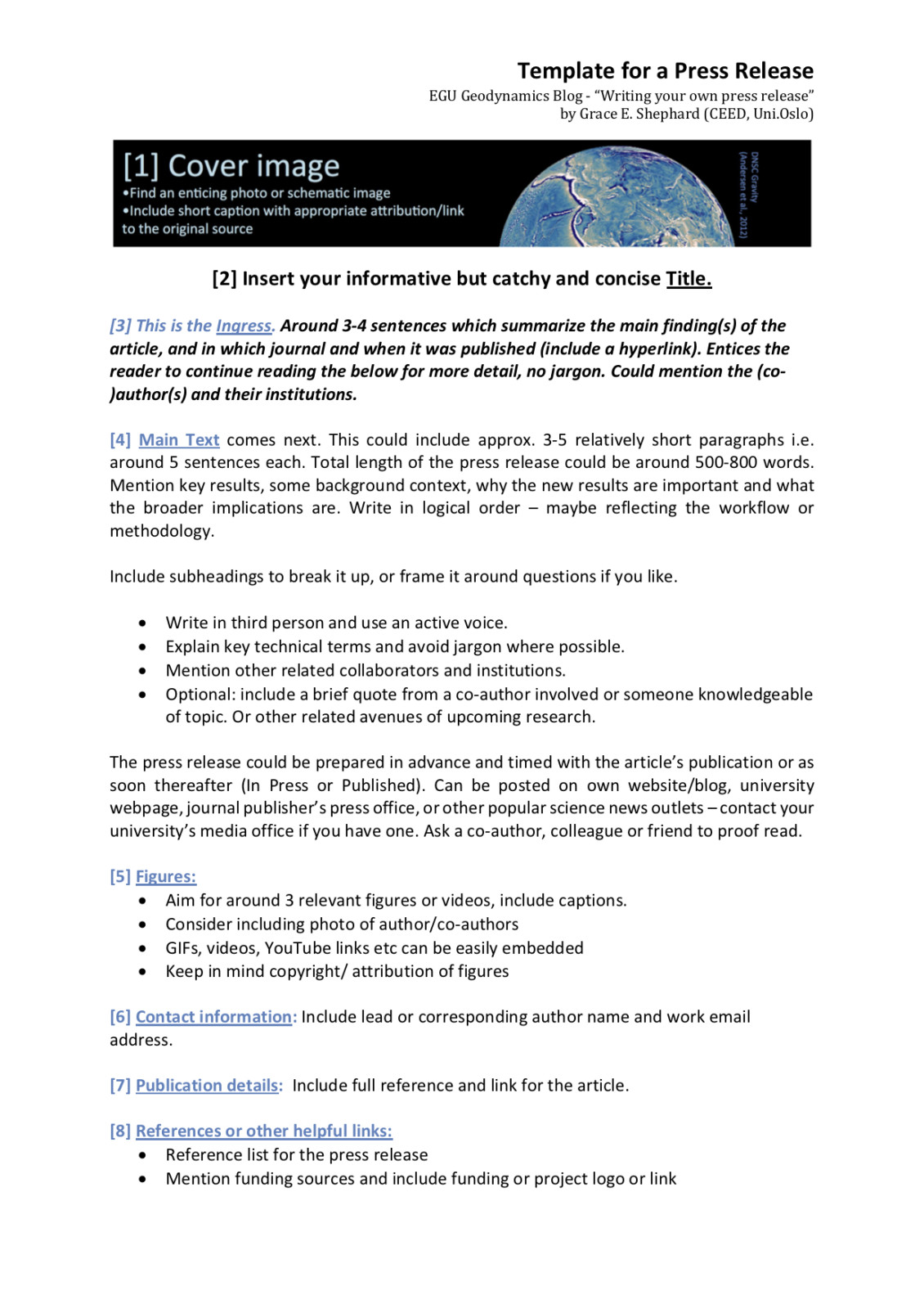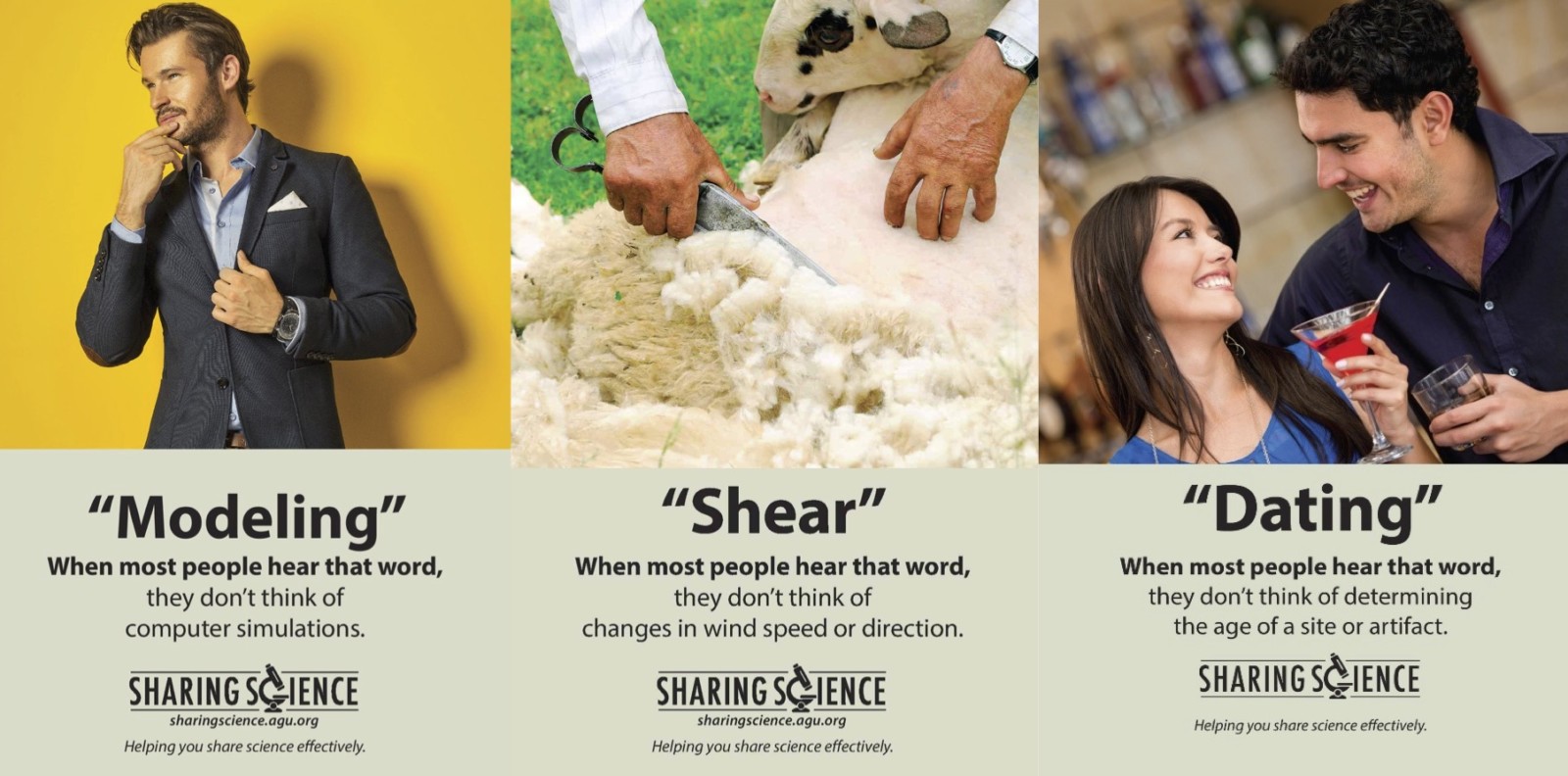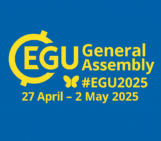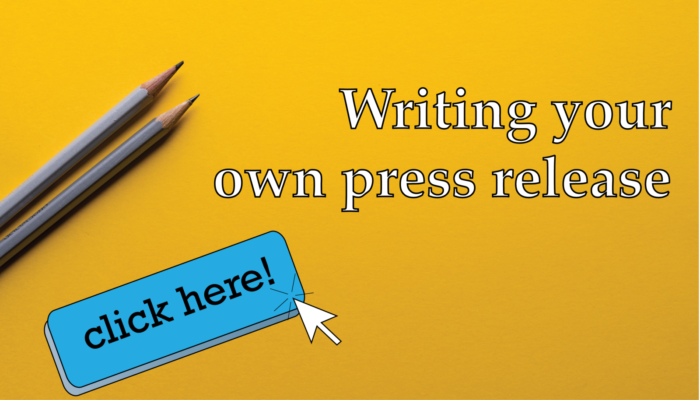
Do you have an upcoming publication and would like to extend its reach through a press release? Maybe your university doesn’t have a media office able to help, you are short on time, and/or don’t know where to start. Don’t fret, this week Grace Shephard (Researcher at CEED, University of Oslo) shares some tips for writing your own press release and includes a handy template for download. She also spoke to experts from the EGU and AGU press offices on writing a pitch to the media.
A press release is a really easy way to maximise the reach and impact of your latest paper. However, you might think that press releases are only reserved for papers in “high impact” journals or are written by magical gnomes that live in everyone else’s science garden but your own. But I think every research output deserves to be, and can be, shared in a concise, digestible, and fun way. Plus, without an enthusiastic journal handling editor or university media office on hand, it is often up to you – the author or co-author – to write it. Need a few more reasons? Well, the taxpayer likely pays for some of your funding, and science should be accessible for everyone. You’ve spent a long (*cough* sometimes very long) time and expended a lot of effort preparing and publishing that manuscript so spending a little extra effort with outreach won’t hurt. And even if your paper is behind a paywall this is a great way to share the main results and context in a format that isn’t the scientific abstract.
And finally, your own friends and family are much more likely to click on it than that boring looking DOI hyperlink that may have crawled its way onto your social media page. And who knows, they may actually ask you about your research sometime…

This gnome is too busy working on someone else’s press release. Credit: Craig McLauchlan (Unsplash)
What should a press release include?
You’ve all read press releases or science news write-ups before (examples included at bottom) but here are some tips for writing your own. The template is located just below:
-
- Catchy headline – We’re not in the business of click-bait, unless it is nerdy scientific click-bait! Think informative but catchy and concise.
- Cover image – Possibly more important than the headline. Find a fun photo or schematic image that is enticing. You could adapt one from your paper (but please not that snore-fest of an xy plot – keep that in the paper), or why not check out the EGU Imaggeo photos, or other online photo repositories for inspiration? Remember copyright/attribution.
- Ingress – Ok, so they’ve clicked on your link and then will next read the first ~3-4 sentences. The ingress should summarize the main finding(s), the journal it was published in, and key author info. You can think of this like a tasty hint for the main body of the press release.
- Jargon – Keep the tricky lingo on the down-low. Remember, you are writing for a diverse audience and should avoid jargon – or when it is unavoidable, define it! This is relevant for both the ingress and the main text. For tips on avoiding jargon see here. Being able to identify jargon is also applicable when writing those Plain Language Summaries that are increasingly featuring alongside published articles. The EGU Communications Officer Olivia Trani also provides some wise advice “When writing blog posts for the general public, science writer Julie Ann Miller says it best: ‘Don’t underestimate your readers’ intelligence, but don’t overestimate their knowledge of a particular field.’ As you discuss certain regions, processes, ideas, and theories, make sure you clearly show why they are important and what implications are present”.
- Main text – Keep it short-ish – it is much more likely to be read in its entirety at 3-4 short paragraphs, or somewhere between 500-800 words. Writing in the third person and an active voice is probably the easiest and feels less like one is ‘tooting one’s own horn’. Mention the key results, some background and context, how the results were obtained (e.g. methods – keep it in logical order). Finally, the press release could mention what is novel about this work and maybe even what the study doesn’t address and any avenues for future research. Include subheadings to break it up or frame it around questions. Nanci Bompey, Assistant Director for Public Information at AGU suggests: “For scientific studies, the news should tell the reader what the researchers found – their main discovery or conclusions. Don’t let the study itself be the news; the study’s results are the news.
- Think “big picture” – Remember to place your results in the broader context – why should the reader care? Hot topics like earthquakes, volcanoes, climate, sea-level, or Mars, may seem to quickly attract the readers so your challenge is to be creative and find nerdy analogies and indirect consequences no matter what your topic!
- Images and video – Include 2-3 images to explain processes and highlight the results. A video or animation will collect bonus points too (check out this amazing video about the Iceland Hotspot). Include a caption and remember attribution. Another tip is if you’re creating original image content, consider adding a little watermark or signature in the image. Also consider putting yourself in the picture too – readers often relate more if they see the human face(s) behind the research (see also ‘Scientists who Selfie Break Down Stereotypes’).
- Proof read – Ask a colleague or friend, either within or outside of the geosciences, to proof read.
- Contact author – Include again the reference and link to the article, and who to contact for more info.
*Download the press release template and check-list here as a PDF *
When should it appear online?
-
- As soon as possible – It’s up to you, of course, but ideally as close to the online publication date of the article as possible. You might like to wait until the nice proof versions are online, however, that can take weeks to months and you may run out of steam by then.
Where to post the press release?
- University webpage – If you have a media/communications office at your institute or university do get in touch with them to ask about options. Your post will likely appear on a university webpage and they will likely have an account that will re-share the press release on the likes of Phys.org and other news websites.
- Personal website – In the event that a university-hosted platform doesn’t exist you could upload the release to your own personal page or blog. You’ll probably like to re-post it there anyway.
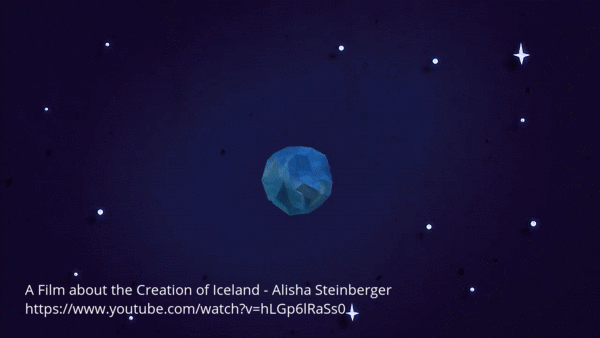
A short clip from – Film about the Creation of Iceland – by Alisha Steinberger and associated with press release for Steinberger et al. (2018; Nat.Geosci).
Maybe you want pitch your press release (or a shorter/alternative version of it) at an even bigger platform – here are some more possibilities.
- EGU blogs – There are more options here than you can poke a stick at. Along with the other EGU Division Blogs we here on the GD blog welcome content related to your latest paper – just look up an editor’s contact details! You can also approach the EGU Communications and Media team directly:
-
- You can send in a pitch for the EGU GeoLog which can include reports from Earth science events, conferences and fieldwork, comments on the latest geoscientific developments and posts on recently published findings in peer-reviewed journals. For example, I tried my hand at GeoLog with ‘Mapping Ancient Oceans’ and received some really useful feedback from the EGU team!
- If you are publishing research in one of the EGU journals that you believe to be newsworthy, you can pitch your paper to media@egu.eu . They regularly issue press releases on science published in EGU journals – as EGU’s Media and Communications Manager Bárbara Ferreira notes, “however, that we would prefer to hear about it even before the paper has been accepted: preparing a press release can take some time so it’s useful to know well in advance what papers we should be looking at. Naturally, any press release would be conditional on paper acceptance and would only be published when the final, peer-reviewed paper is published in the journal.”
-
- AGU’s Eos – Eos is another ‘Earth and Space Science News’ platform to send your pitch for an article.
Heather Goss, Editor-in-Chief of Eos, suggests that when writing a pitch to the media you “keep your pitch between 200 and 500 words. (You can link to your research, or include more detail at the end of the message.) Begin with a sentence or two that highlights the article’s focus: Do you have an exciting finding? Is it a new method? Did it raise an interesting new question? Explain both the focus and what it is right up front. Then break down your research into 2-3 key points that you want to get across to the journalist. This might be your research method, a challenge that you had to overcome for the result, or it might simply be breaking down your research finding into a few digestible pieces. If there is a fun detail that adds colour, here is the place to add it. Finally, explain in a sentence or two why the publication’s audience should care. It helps the journalist put your work in context, and shows that you understand the outlet you’re pitching to—this is a crucial step if you’re actually writing the piece that would be published, as with Eos.” - Other Science news outlets – you could approach freelance journalist, local radio or news station, or those behind the popular sites like ScienceAlert, The Conversation (more in-depth), IFLS, National Geographic, Science Magazine etc. However, they receive a lot of mail and only follow up on selected pitches so just see what happens!
Some additional tips before we part:
- You can also use a little glossary or side bar to explain unavoidable technical terms (for example, “subduction” and “plate tectonics”, are terms I find hard to avoid).
- Writing in English would reach a wide audience but consider including a shorter summary or translation to other languages.
- Add hyperlinks and references for more info.
- Include some direct quotes – if you write in third person then it makes it a little less awkward to quote yourself. You could also add a quote from a co-author or someone not-related to the study.
- Need more inspiration? – head over to your favourite science news website, EGU GeoLog, or check out EGU/AGU’s social media accounts and take a look on how others write-up science news and press releases.
A couple more examples of press releases or similar-style science news articles:
- The Unsolved Mystery of the Earth Blobs – from AGU EOS
- Scientists pinpoint where seawater could be leaking into Antarctic ice shelves – from EGU GeoLog
- How the Pacific got its bend – CEED U.Oslo.
- Life Recovered Rapidly at Impact Site of Dino-Killing Asteroid – from U.Texas
- Scientists Think They Found Missing Evidence That Explains How Life Started on Earth – from ScienceAlert
I hope you find some of the tips above of use, and good luck with writing!
Thanks very much to Olivia Trani and Bárbara Ferreira (EGU), and Heather Goss and Nanci Bompey (AGU) again for their press release, pitch and outreach tips!

